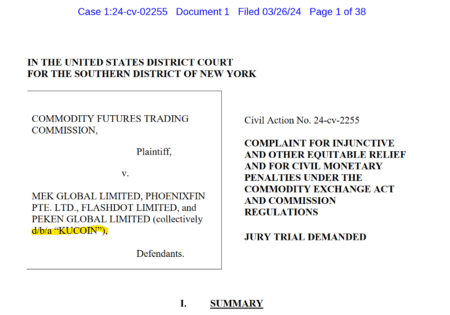On the night of April 13/14, crypto prices underwent a sharp correction, continuing the trend of the previous days. There is nervousness surrounding the Bitcoin halving. The estimated time of Bitcoin’s fourth halving is expected to happen around April 20, with the block subsidy dropping from 6.25 BTC to 3.125 BTC. However, the recent crypto crash appears to have been influenced by a combination of factors, reflecting the complex interplay of market dynamics and external economic indicators.
- Market Liquidity and Leverage: One significant factor was the high degree of leverage used by traders, which, when unwound, led to substantial liquidations. This unwinding of leveraged positions often triggers sharp price movements, contributing to the crash. Market liquidity was also strained during this period, exacerbating the price drops as traders scrambled to exit positions (Coinpedia Fintech News) (Mitrade) (CryptoGlobe).
- Economic Indicators and Rate Expectations: Economic data released around that time showed stronger-than-expected resilience in the US economy, including higher inflation and retail sales figures. This data dampened hopes for imminent rate cuts by the Federal Reserve, which in turn affected investor sentiment across various markets, including cryptocurrencies. The anticipation of steady or rising interest rates can decrease the attractiveness of riskier assets like cryptocurrencies (CoinGape) (CryptoGlobe).
- Crypto Market Sentiments: The crash was also a result of fading positive sentiments in the crypto market. This included growing skepticism around the approval of cryptocurrency-related ETFs, particularly with the SEC taking a cautious approach towards new ETF approvals. Negative sentiments were further fueled by the realization that regulatory hurdles remain significant, and the expected institutional support via ETFs might not materialize as hoped (Mitrade) (CryptoGlobe).
These elements combined to create a perfect storm that led to rapid sell-offs across major cryptocurrencies. Each of these factors not only highlights the volatility and sensitivity of the crypto market to macroeconomic indicators but also underscores the impact of market mechanics such as leverage and liquidity. This event serves as a reminder of the inherent risks in the crypto market, where both external economic factors and internal market dynamics can drive significant price movements.
At present, crypto prices have stabilized at the lower level or even regained some ground on the upside. However, high volatility should still be expected.





